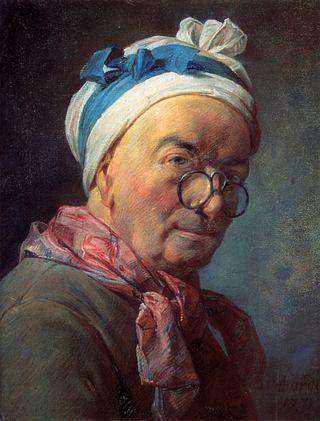
Jean Siméon Chardin was an 18th-century French painter. He is considered a master of still life, and is also noted for his genre paintings which depict kitchen maids, children, and domestic activities. Carefully balanced composition, soft diffusion of light, and granular impasto characterize his work.
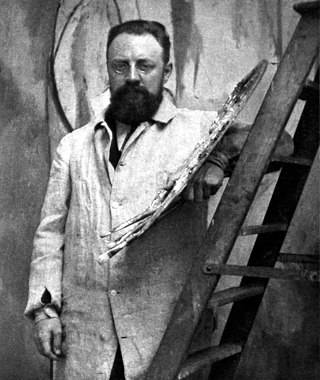
Henri Émile Benoît Matisse was a French visual artist, known for both his use of colour and his fluid and original draughtsmanship. He was a draughtsman, printmaker, and sculptor, but is known primarily as a painter. Matisse is commonly regarded, along with Pablo Picasso, as one of the artists who best helped to define the revolutionary developments in the visual arts throughout the opening decades of the twentieth century, responsible for significant developments in painting and sculpture.
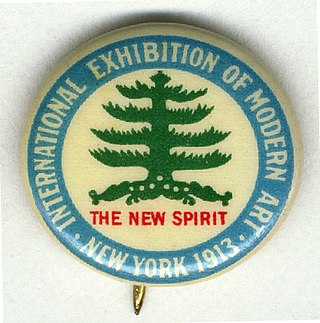
The 1913 Armory Show, also known as the International Exhibition of Modern Art, was organized by the Association of American Painters and Sculptors. It was the first large exhibition of modern art in America, as well as one of the many exhibitions that have been held in the vast spaces of U.S. National Guard armories.

The Rose Period comprises the works produced by Spanish painter Pablo Picasso between 1904 and 1906. It began when Picasso settled in Montmartre at the Bateau-Lavoir among bohemian poets and writers. Following his Blue Period – which depicted themes of poverty, loneliness, and despair in somber, blue tones – Picasso's Rose Period represents more pleasant themes of clowns, harlequins and carnival performers, depicted in cheerful vivid hues of red, orange, pink and earth tones.

John Quinn was an Irish-American cognoscente of the art world and a lawyer in New York City who fought to overturn censorship laws restricting modern literature and art from entering the United States.

The Yellow Christ is a painting executed by Paul Gauguin in 1889 in Pont-Aven. Together with The Green Christ, it is considered to be one of the key works of Symbolism in symbolic mythological paintings of the older era as represented by Symbolism.
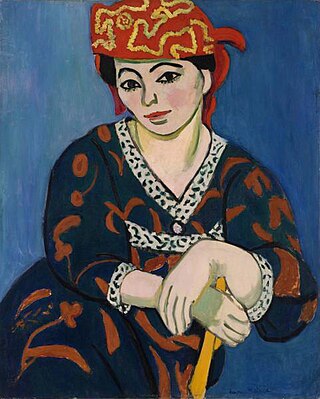
Madras Rouge is a painting by Henri Matisse from 1907. The woman depicted is the painter's wife, Amélie Noellie Parayre Matisse. It is held in the Barnes Foundation, in Philadelphia.

Le bonheur de vivre is a painting by Henri Matisse. Along with Picasso's Les Demoiselles d'Avignon, Le bonheur de vivre is regarded as one of the pillars of early modernism. The monumental canvas was first exhibited at the Salon des Indépendants of 1906, where its cadmium colors and spatial distortions caused a public expression of protest and outrage.

The Red Studio is an oil on canvas painting by French artist Henri Matisse from 1911. It is held in the collection of the Museum of Modern Art, in New York.

The Yellow Curtain is a painting by Henri Matisse created in 1915. Its size is 57½ × 38⅛". It is in the collection of the Museum of Modern Art, in New York.

The Matisse Museum is a museum in Le Cateau-Cambrésis, France that primarily displays paintings by Henri Matisse. The museum was established by Matisse himself on 8 November 1952; he also defined the way his works should be arranged. At that time the museum was located in the wedding room of the Le Cateau City Hall.
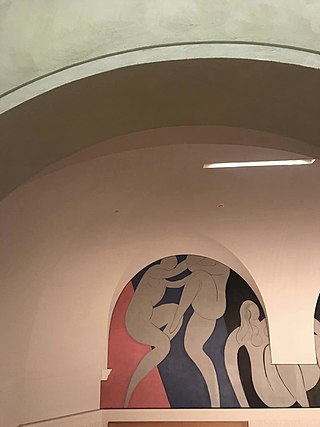
The Dance by Henri Matisse is a triptych mural in the Barnes Foundation. It was created in 1932 at the request of Albert C. Barnes after he met Matisse in the United States. Barnes was an art enthusiast and long-time collector of Matisse's works, and agreed to pay Matisse a total of $30,000 for the mural, which was expected to take a year.
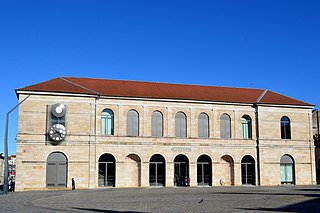
The musée des Beaux-Arts et d'Archéologie in the French city of Besançon is the oldest public museum in France. It was set up in 1694, nearly a century before the Louvre became a public museum.

Fauvism is a style of painting and an art movement that emerged in France at the beginning of the 20th century. It was the style of les Fauves, a group of modern artists whose works emphasized painterly qualities and strong colour over the representational or realistic values retained by Impressionism. While Fauvism as a style began around 1904 and continued beyond 1910, the movement as such lasted only a few years, 1905–1908, and had three exhibitions. The leaders of the movement were André Derain and Henri Matisse.

Bathers is a Proto-Cubist painting, now lost or missing, created circa 1908 by the French artist and theorist Jean Metzinger. Possibly exhibited during the spring of 1908 at the Salon des Indépendants. This black-and-white image of Metzinger's painting, the only known photograph of the work, was reproduced in Gelett Burgess, "The Wild Men of Paris", Architectural Record, May 1910. The painting was also reproduced in The New York Times, 8 October 1911, in an article titled "The 'Cubists' Dominate Paris' Fall Salon", and subtitled, "Eccentric School of Painting Increases Its Vogue in the Current Art Exhibition - What Its Followers Attempt to Do".

Young Girl with a Flower Basket is a 1905 oil on canvas painting by Pablo Picasso from his Rose Period. The painting depicts a Parisian street girl, named "Linda", whose fate is unknown. It was painted at a key phase in Picasso's life, as he made the transition from an impoverished bohemian at the start of 1905 to a successful artist by the end of 1906. The painting is listed as one of the most expensive paintings, after achieving a price of $115 million when it was sold at Christie's on 8 May 2018. It is currently the fourth highest selling painting by Picasso.
Young Woman in White on a Red Background is an oil on canvas painting by Henri Matisse, from c. 1946. It is held in the Museum of Fine Arts of Lyon.

French visual artist Henri Matisse was known for his use of color and draughtsmanship. In the early 20th century, Matisse became a leader of the Fauvism art movement, which was an early movement in the broader Post-impressionist era.
















